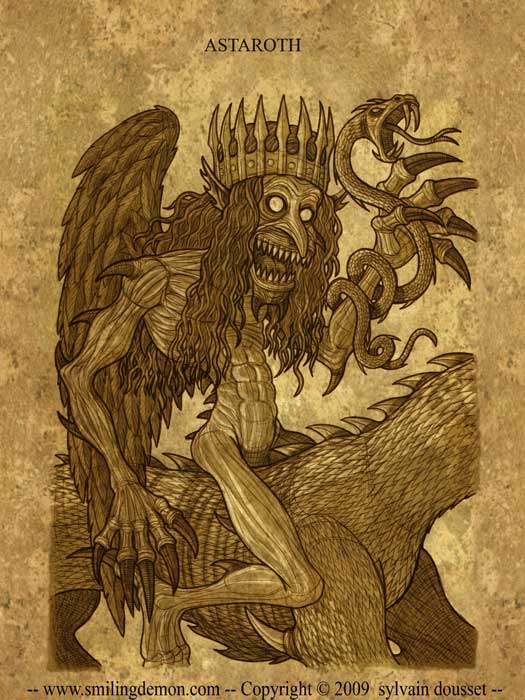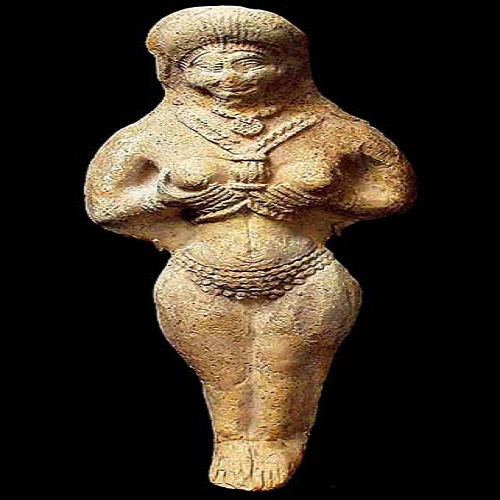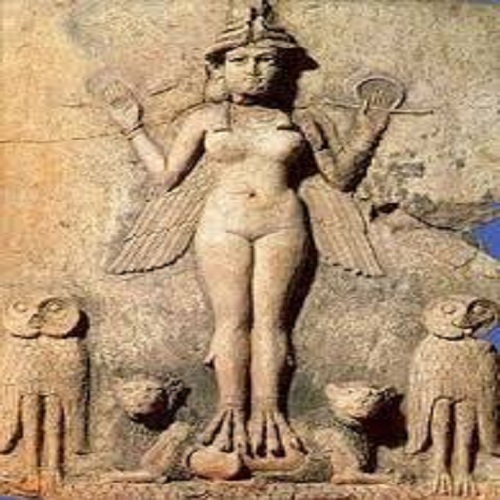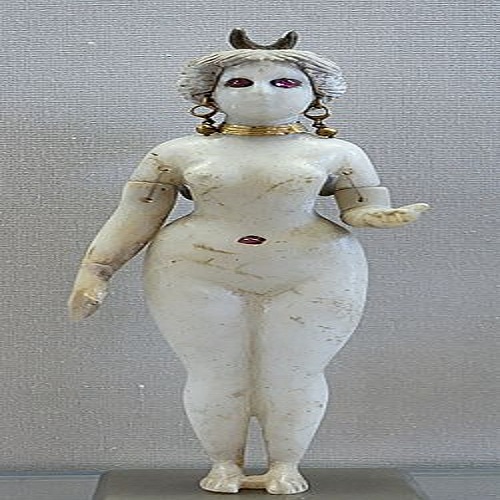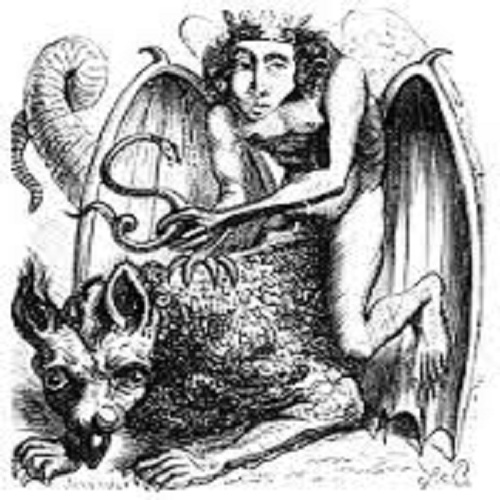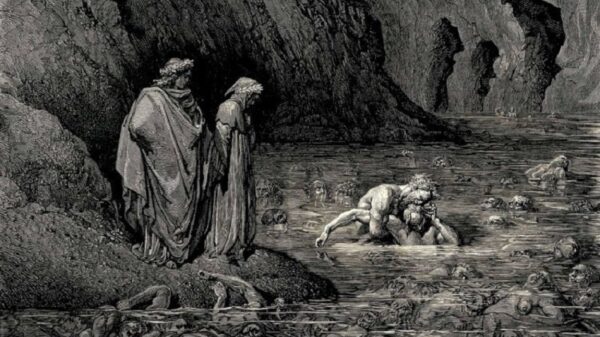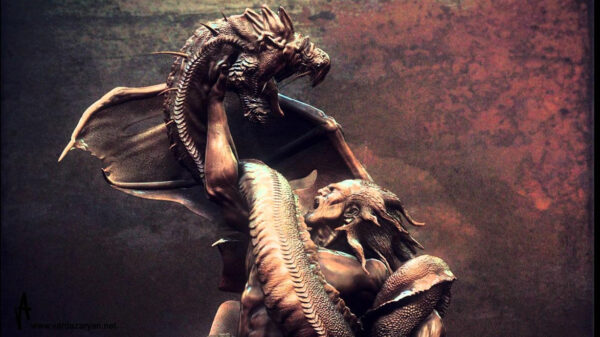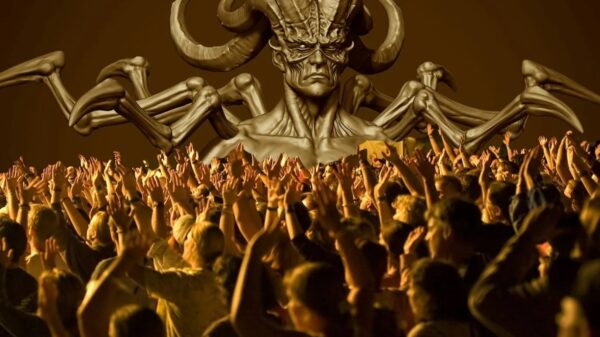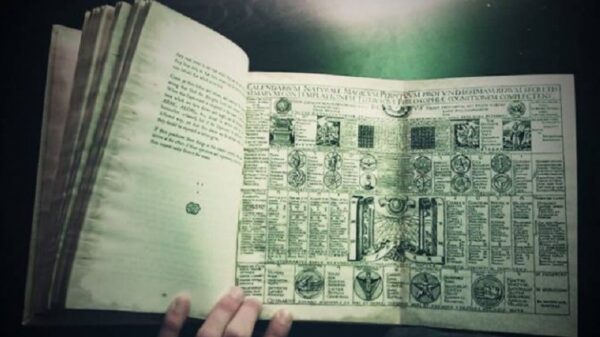Does it really surprise anyone that Hell has a chief financial officer? This almost seemed too obvious to tackle, until I realized that it raises a number of questions that I would like answered, such as (1) What is Hell’s source of revenue? (2) How is Hell incorporated? (3) Who is the iron-balled Internal Revenue Service agent that would dare to audit Satan (and what would the point be, since any self-respecting demon is going to keep two sets of books)? And on top of that, while Dr. Martin Luther King, Jr. sagely argued that “the hottest place in Hell is reserved for those who remain neutral in times of moral conflict”, I strongly suspect that a still warmer cell is reserved for the treasury agent that dinged the Devil for failing to pay his 1989 taxes and his unreported contributions to the Bachmann campaign, and most importantly (4) Will they have an IPO and can I buy stock? – my broker is cautiously optimistic at the prospect, but I personally feel confident that evil is a growth industry, and think I could stand to make a killing, so to speak. Well, medieval and renaissance Christian demonology and occultism, which definitely pull their weight in coming up with existentially weird monstrosities (big fan here), assign the dubious duties of managing Hell’s accounts to a fascinating and well-pedigreed demonic critter named Astaroth (his resume says “Lord Treasurer of Hell” which assures him a plum job at any of our bailed-out American banks should he choose a change of venue, and I don’t know about you but I would love a look at his previous employment history – a sneak peek indicates he consulted for Fannie Mae). Astaroth is of great prominence (Grand Duke of West Hell, which surprisingly as point of fact is not actually located in Oklahoma), ranked up there with the big guys like Beelzebub, Asmodeus, Lucifer, Baal, and Moloch. These are not the little pitchfork wielding flunkies begging for a deal at the crossroads. These are the guys in charge of the deadly sins, corrupting the works of the Big Guy, ushering in Armageddon, and the sudden, inexplicable popularity of Macklemore.
The name Astaroth (actually plural feminine in Hebrew – the Old Testament seems to suggest there were a lot of statues of her about) is widely regarded as a bastardization of the name of the 2nd Century B.C. Phoenician goddess Astarte (the Babylonians called her Ishtar and the Sumerians called her Innana; the Greeks equated her with Aphrodite), and had her heyday as a deity in the Bronze Age Middle East as a god of fertility, sexuality, and war, and connections have been drawn by scholars into remoter antiquity with a generalized divine creature representing the virgin mother goddess (although honestly there were a lot of those around, and personalities varied from loving friends of humanity to bloodthirsty monsters). These may not seem like auspicious credentials for the future banker to Satan, although it would not be unreasonable to assume that if there ever was a celestial patron of defense contractors, Astarte was it. War is big money, and somebody has to manage the finances. You don’t want to trust mere mortals with that kind of stuff. Ishtar’s cult of sacred prostitution was big in Babylonia, and as it is after all the oldest profession, it no doubt required the earliest tax records. Thus it seems that Astaroth had a few millennia of experience moving money around, but not in an especially evil way, say like belonging to the G8 signifies. Along come those Israelites to put a whuppin’ on Canaan.
How did the lovely Astarte (our future Astaroth) go from a funky mother god to a big bad demon? Sorry to let you down, but it was the usual historical pattern. History largely consists of one bunch of barbarians clubbing another bunch of barbarians over the head and taking their stuff. We eventually invented laws, which essentially changed nothing except making the process a whole lot more polite. Try not paying your taxes. You’ll see what I mean. A great deal of this never-ending transfer of ownership with extreme prejudice has been encoded in our various mythologies, which lends a bit of a romantic air to blatant robbery, but nonetheless represents the eternal cycle of one hairy brute clobbering another, and unceremoniously taking his land, ladies, and livestock, then rudely penning a chronicle that demonizes his victim and characterizes them as monsters worthy of a sound beating about the head and neck. So the ancient Israelites marched in and gave the Canaanites a swift kick in the rear, followed by turning all their gods into demons, as humanity has been doing to other people’s gods since time immemorial. Now Astaroth was a party god compared to that stern, father figure of Yahweh, so it seems that early Judaism had a lot of problems keeping folks on the straight and narrow, so we see Old Testament commentary warning people away, such as “And Samuel spake unto all the house of Israel, saying, If ye do return unto the lord with all your hearts, then put away the strange gods and Ashtaroth from among you…” (Samuel 7:3). So, pretty much like every other local god encountered, poor Astaroth became just another in a litany of demons. Things get very confused for a thousand years, but round about the 15th Century A.D., the Western world started to take an interest in the minutia of who exactly all these biblical demons were, mostly in the interest of defining proper extraction methods, harnessing their power, or clearing up some of the more confusing theological points that are abundant in religious texts (e.g. snakes with legs).
So first and foremost, Astaroth got a gender change. Astarte was widely depicted as a voluptuous naked lady with either a crescent moon, or horns on her head, as would befit a goddess of fertility, sexuality, and war. When Astarte re-emerges as the modern incarnation of Astaroth (after generations of biblical condemnation), the sexy goddess standardly becomes a crazy looking naked dude riding a dragon. This representation is pretty much hashed out by occultists and kabbalists in the 15th Century, the primary source being the Book of Abramelin (reportedly written in Hebrew somewhere around 1458 A.D.) which would be faithfully reproduced for the next few centuries in various occult grimoires. Astaroth no doubt recognized that the whole fertility god racket faced imminent obsolescence, what with all the sexually repressed Judeo-Christian morality in the air, and decided to go back to school for that prized, and non-controversial CPA credential, despite the fact that most contemporary deities were recommending plastics.
The Clavicula Salomonis Regis (The Lesser Key of Solomon), a popular 17th Century user manual on demonology gives a description of Astaroth, along with the tasty tidbit that he has rather atrocious dental hygiene, which might seem a little petty, except that it was attempting to warn would-be magicians to hold their breath when summoning him.
He is a Mighty, Strong Duke, and appeareth in the Form of an hurtful Angel riding on an Infernal Beast like a Dragon, and carrying in his right hand a Viper. Thou must in no wise let him approach too near unto thee, lest he do thee damage by his Noisome Breath. Wherefore the Magician must hold the Magical Ring near his face, and that will defend him. He giveth true answers of things Past, Present, and to Come, and can discover all Secrets. He will declare wittingly how the Spirits fell, if desired, and the reason of his own fall. He can make men wonderfully knowing in all Liberal Sciences. He ruleth 40 Legions of Spirits. His Seal is this, which wear thou as a Lamen before thee, or else he will not appear nor yet obey thee (The Lesser Key of Solomon, trans. Mathers, 1904).
Now there are very similar references to Astaroth in some notable works on demonology such as the 1818 Dictionnaire Infernal (complete with hellish illustrations) and earlier works such as the 1577 De praestigiis daemonum (“False Monarchy of Demons”) by Dutch occultist and follower of the mysterious Cornelius Agrippa, Johann Weyer, but everything reproduced after Weyer’s treatise that laid out the Pseudomonarchia Daemonum (“Hierarchy of Demons”) seems to crib directly from him. Compare Weyer’s description of Astaroth to that found in the Lesser Key of Solomon (which of course purported to be written by King Solomon, who ostensibly pre-dated Christianity by some 900 years, so we’re a bit dubious about that claim), and apart from the Old English riffs, it is more or less identical.
Astaroth is a great and a strong duke, coming forth in the shape of a fowle angell, sitting upon an infernal dragon, and carrying on his right hand a viper: he answereth trulie to matters present, past, and to come, and also of all secrets. He talketh willinglie of the creator of spirits, and of their fall, and how they sinned and fell: he saith he fell not of his owne accord. He maketh a man woonderfull learned in the liberall sciences, he ruleth fourtie legions. Let everie exorcist take heed, that he admit him not too neere him, because of his stinking breath. And therefore let the conjuror hold neere to his face a magicall ring, and that shall defend him (Weyer, De praestigiis daemonum, Appendix, Lectoris 28).
It seems likely that an early notion of this arose with Weyer, who makes offhand mention that Astaroth is “Grand Treasurer” of Hell, along with our favorite French Inquisitor Sébastien Michaëlis in roughly 1612, the contents of whose Histoire admirable de la possession d’une penitente (“The Admirable History of Possession and Conversion of a Penitent Woman: Seduced by a Magician that Made Her to Become a Witch”) included a detailed hierarchy of Hell, reportedly dictated by nun-possessing demons, where Astaroth is credited with leading men to hidden treasures. One supposes that in order to direct people to hidden treasures, it would be essential to first know where these treasures are located, and it would behoove the head accountant in Hell to be aware of their dispensation. Essentially, the appellation of “Lord Treasurer” to Astaroth should largely be ascribed to Weyer. The question of course, is why? Well, consider the demonic hierarchy that he lays out.
Princes and Grand Dignitaries.—Beelzebuth, Supreme Chief of the Infernal Empire, founder of the Order of the Fly. Satan, Leader of the Opposition. Euronymous, Prince of Death, Grand Cross of the Order of the Fly. Moloch, Prince of the Land of Tears, Grand Cross of the Order. Pluto, Prince of Fire. Leonard, Grand Master of Sabbaths, Knight of the Fly. Baalberith, Minister of Treaties. Proserpine, Arch-she-devil, Sovereign Princess of Mischievous Spirits. Ministers.—Adramelek, Lord High Chancellor, Grand Cross of the Order of the Fly. Astaroth, Grand Treasurer. Nergal, Chief of the Secret Police. Baal, Commander-in-Chief of the Infernal Armies, Grand Cross of the Order of the Fly. Ambassadors.—Belphegor, in France, Mammon in England, Belial in Turkey, Rimmon in Russia, Thamus in Spain, Hutgin in Italy, Martinet in Switzerland. Judges.—Lucifer, Lord Chief Justice. Alastor, Commissioner of Public Works. Royal Household.—Verdelet, Master of Ceremonies. Succor Benoth, Chief of the Eunuchs. Chamos, Lord High Chamberlain, Knight of the Fly. Melchom, paymaster. Misroch, Grand Steward. Behemoth, Grand Cup Bearer. Dagon, Grand Pantler. Mullin, First Gentleman of the Bedchamber. Masters of the Revels.—Kobal, Stage Manager. Asmodeus, Superintendent of Casinos. Nybbas, Chief Mimic. Antichrist, Juggler andjgimic (Waite, 1890, p181, [quoting Weyer]).
Hell is clearly styled after a European monarchy, according to Weyer, complete with official positions, orders, fancy sounding attendants and everything one needs to administer the kingdom. Says a lot about our nearly universal disdain for politics. And a lot about Weyer. Johann Weyer was appointed the town physician of the Dutch municipality of Arnhem in 1545, but by 1550, they could no longer pay his salary, and through the intervention of friends, went to work in Cleves (German/Dutch border) for Duke William the Rich, where he authored numerous works on witchcraft and demonology. I think I am beginning to see the pattern. When you’re trying to make a living as a country doctor while your employer gets a fancy nickname like “the Rich”, it must seem pretty obvious that Hell has a treasury, and consequently, a treasurer. English novelist Henry Fielding suggested, “Money is the fruit of evil, as often as the root of it”, but I think this ultimately misses the point, the point of course being, does Hell have stock options? At any rate, I’m pretty sure you can guess their taxpayer ID number.
